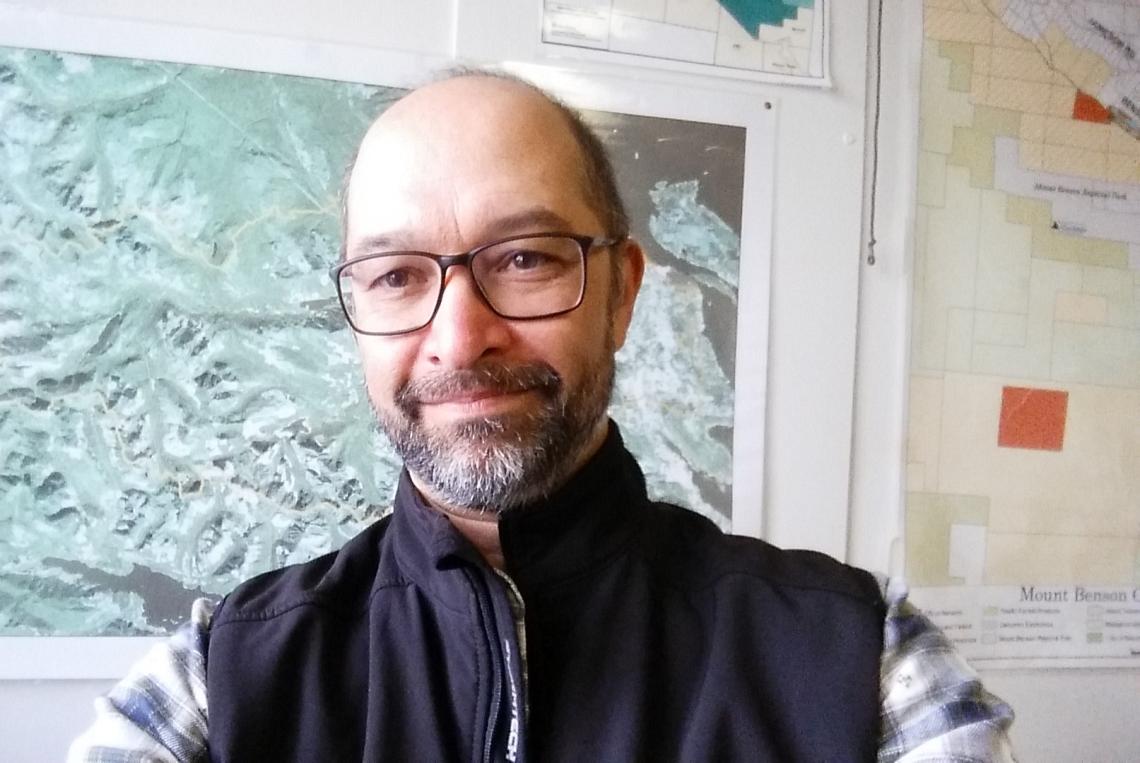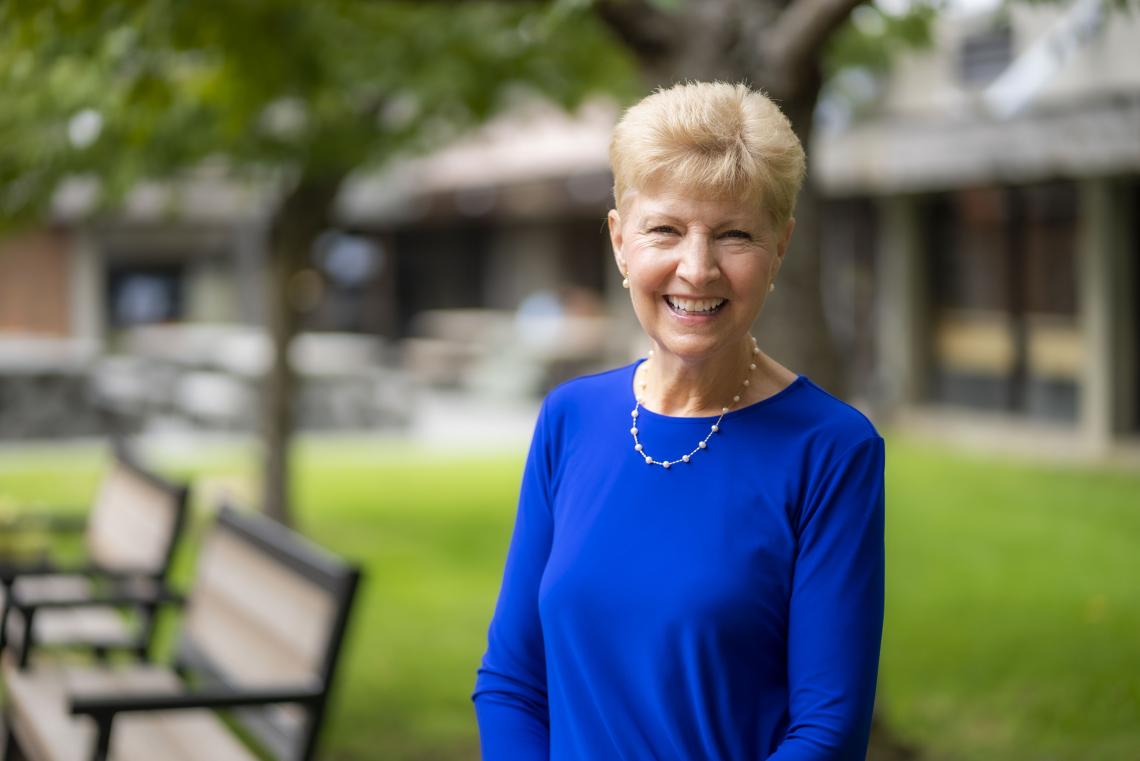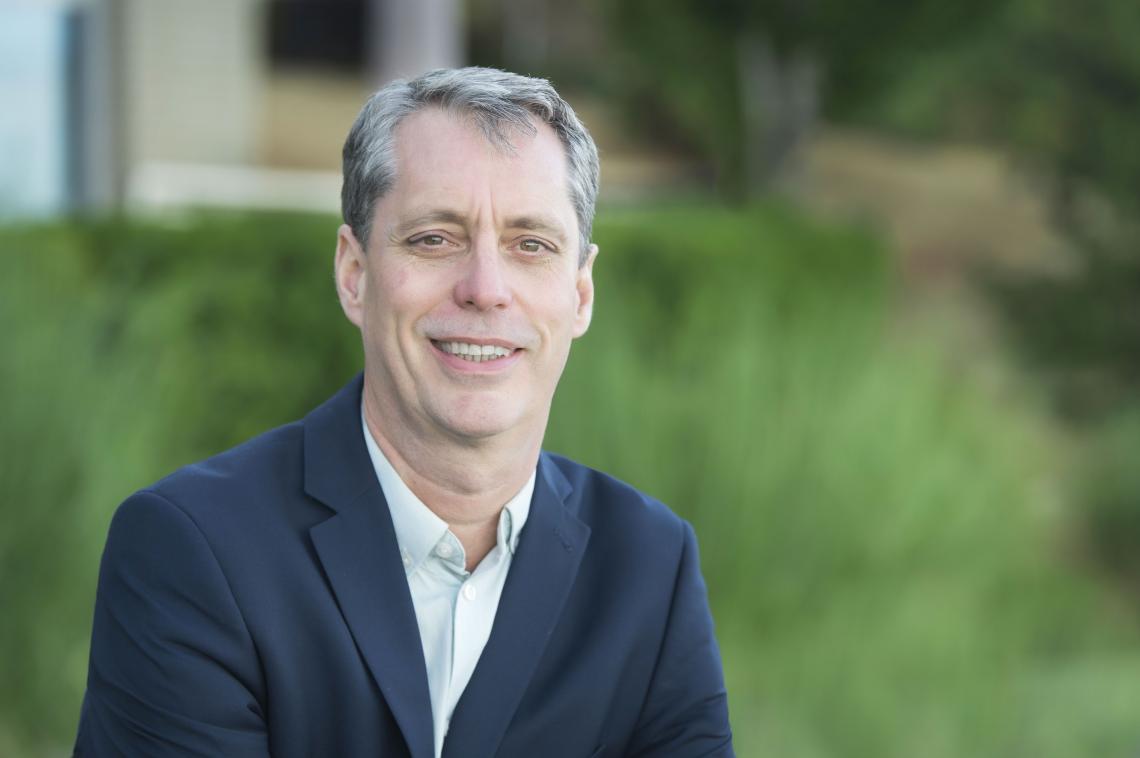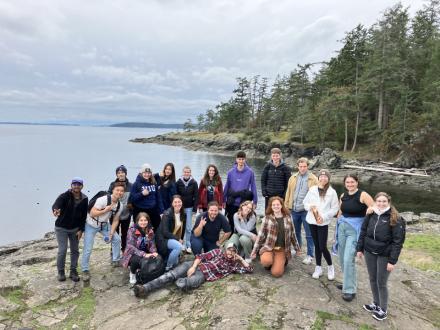Candidates answer two questions
Climate action and sustainability is one of the pressing issues VIU students and employees alike are concerned about. In support of democratic principles and to shed light on an issue that matters to so much of our community, the Engagement and Dialogue Working Group for the President’s Taskforce on Climate Action and Sustainability posed two questions to all of the candidates running in Nanaimo’s 2022 municipal election. The candidates we received responses from are shared below in the order in which we received them.
Question 1: The City of Nanaimo has recently completed its City Plan that includes five central goals. One of these is the “Green Nanaimo” goal that speaks to sustainability initiatives. This goal includes eight policy areas (e.g. GHG emissions reduction; climate adaptation and mitigation; healthy watershed; water, sewer, and stormwater services; solid waste management; brownfield sites; artificial lighting and dark skies). Which of these do you feel requires the most rapid attention and how would you prioritize action around these topic areas?
Mayoral candidate Brunie Brunie
Nanaimo is very far behind in green ecology. Green spaces along curbs have been allotted to development, leaving only pavement for the public. Trees unnecessarily cut down. Deadly emissions in the downtown core must be removed and allow people to enjoy an outdoor public square.
Council candidates
Paul Chapman

Adaptation encompasses action on healthy watersheds and stormwater services. If the known effects of climate change locally are going to be more intense periods of rain, prolonged periods of dry and drought, threat of wildfire and heat extremes, then some of the most effective actions we can take are expanding our parks and protected areas. Protected areas like riparian land provide the opportunity to slow down and absorb rain, which protects our stream banks and water quality. The water that infiltrates into the ground is available as base flow to streams in times of water scarcity while also providing groundwater for other natural and human needs. Abundant groundwater will be crucial in the face of fire risk. Parks, protected spaces and urban forests provide ecosystem connectivity and resiliency while also providing us space to keep calm, cool and connected during heat extremes.
Mitigation includes a variety of efforts to improve our efficiency. Retrofitting buildings with improved insulation and heat pumps can reduce our carbon footprint dramatically. Moving to electric vehicles and less reliance on vehicles will also dramatically reduce our carbon contributions to climate change. A safe and connected active transportation network of sidewalks, bike lanes and paths, coupled with walkable distances to work, play and home can change our dependency on auto transportation. I’d like to explore securing the forests of our drinking water watershed for carbon capture.
I will work with council to expand our parks and protected areas, grow our urban forest, expand our active transportation network and look for innovative ways to secure our watershed forests through carbon capture initiatives.
Jay Krishan
I will perhaps ease into this discussion by saying, first, that I want to ensure that as the City of Nanaimo expands and matures, and as its density increases, that we pay active mind to sustainable development in a concurrent way. Sustainability should be thought of in our design. Generally, someone visiting Nanaimo as a tourist should be able to recognize that the City is paying mind to the environment; it should be obvious. Existing in harmony with our natural environment means caring for it through our processes. It should show.
I would be particularly receptive to the priority of protecting our natural waters. Protecting any water body has great significance, especially in Nanaimo. We have a range of biodiversity that depends on access to the water bodies. Hunting and feeding patterns are tied to them. Perhaps you would be happy to know that I have, over time, photographed beautiful animals in the natural environment here in Nanaimo. I mention this to say that – I want to see that their habitats are protected; I want to continue to see them amongst us. I hope that all our marine activity and business and trade processes make it a high priority to keep the waters clean. Same goes to any big manufacturing companies situated near the waters.
Peter Lee

Peter Lee
I believe that climate adaptation requires the most rapid attention. Extreme weather events have been impacting Nanaimo at an accelerating pace. The effects of these events – extreme heat, air pollution from forest fires, property damage from winter storms – can be ameliorated by the actions of city government that are the within municipal mandate. As city councillor, I will call for the creation of a comprehensive extreme weather response strategy – formalized planning of cooling and heating centres with thresholds of activation, air pollution relief centres, potential distribution of masks/air filters to vulnerable populations, and an integrated action plan for co-ordination with provincial and federal governments during extreme weather events.
Mike Hartlaub
First off, are you aware that the Nanaimo city plan for environment was funded by a group called the Federation of Canadian Municipalities? Who is that exactly? I will be happy to tell you who funds the Federation of Canadian Municipalities. It is in fact the Federal Government of Canada. So that now begs the question: Why didn’t they just say it was the Federal Government of Canada that funded the City’s climate policy. Has anyone asked Leonard Krog that question? The information used to create the environmental plan was reliant on data, as it used starting base figures and computer-projected models that show estimated changes. If you look at what they are using for a baseline for projected severe rainfall outcomes, you will see that they are only using very specific data and what that does is substantiates this premise that climate change is human-caused. This is classic “lying by using statistics” tactics. If it wasn’t then why did they choose such a short window of time when we have access to statistics for much longer periods. The statistics should have been for a “set period of time for all the designations they used.” This would have made this document much more accurate. I would imagine you would like to have the longest data available to get the best information to determine if these are indeed weather events that warrant the classification of “Emergency.”
Janice Perrino

I believe “climate adaptation and mitigation” requires the most rapid attention. As a society I think we all need more education to understand where the problems started so we can make real efforts to turn the situation around for the future. We need short-term and long-term goals to know what we can do in Nanaimo to make BC and Canada a better, healthier place for all of us to live.
For example, Nanaimo is doing a lot of new development that has been desperately needed. That's good, however, should we be taking down major forested areas for more housing or should we be putting density in areas that are already established. I believe we ought to put housing in areas that are already established, like the downtown. Let’s create an environment of live, work and play in our beautiful downtown. I’m certain this would help with the ongoing crime issue there as well. How much land should we be using for single family homes? I think we can build on smaller lots. What are the incentives for building an energy efficient home? I can assure you, it’s not enough. We all need to be encouraged to put in the best energy saving windows, doors, insulation, methods of heating and careful use of water. Can we safely put gardens on rooftops of houses and buildings, and why aren’t we encouraging more of this type of food sustainability? We should be introducing more community gardens in every park to allow people the opportunity to grow vegetables locally.
Cars are probably inevitable for another 50 years at least, but we know we want to get as many off the road as possible. One small solution would be to allow rental companies to have e-bikes and e-scooters available for people to rent. In major centres similar in size of Nanaimo, these two modes of transport make travel easy and fun for people who want to get around without using their car. Nanaimo doesn’t even have the option of Uber and this is a major city. We need to change that.
Paul Manly

All of the priorities are important. I would prioritize the top three in this order: greenhouse gas (GHG) emissions reduction; climate adaptation and mitigation; and a healthy watershed.
To keep the global temperature increase below 2°C, every community across Canada needs to do its part and reduce GHG emissions. The City of Nanaimo must do as much as possible to encourage residents, landlords, businesses and institutions to switch from fossil fuel energy to electrification for heating and transportation. Nanaimo can take steps to generate zero-emission energy. VIU has tapped into the geothermal potential of abandoned coal mines and the city could be doing the same, to power city facilities and provide power for residential buildings and businesses. This could be augmented with solar, wind, tidal and hydroelectric generation to create a robust and locally-distributed energy system.
Creating conditions for local businesses to thrive will ensure that they are here and ready to provide essential goods and services during global supply chain disruptions. Another key part of climate adaptation will be increasing local food production. Ninety-five per cent of the food consumed on the Island is imported, often from thousands of miles away. Increasing local food security lowers the carbon footprint of what we eat and leaves us less susceptible to fluctuations in global supply chains due to droughts and climate-related disasters in other regions.
The Nanaimo River watershed and its connected aquifers are the key sources of water in the region. It’s essential that we prepare for increasing droughts and future demands. That’s why, over the past two decades, I’ve advocated for better protection of the 750-square-kilometre Nanaimo River watershed, and the community drinking water it contains.
Ben Geselbracht
I was one of the Chairs of the city’s Environment Committee that played a large role in developing the policies of the “Green Nanaimo” portion of the city plan. The policies are forward-thinking and ambitious. Part of the city plan was to ensure there were measurable targets associated with each of the policy areas to provide an objective measure of how the city was performing. The area we are falling the most short of our targets is the rate of GHG emission reductions. In 2005 the city planned to have had a 17 per cent reduction in GHGs by 2020, but unfortunately, they grew by 30 per cent between 2005 and 2020, due primarily to an increase in heating with natural gas. To reach our goal to reduce GHG emissions, we must focus our efforts on the building, transportation and waste solutions outlined in the emission reduction policy area of the city plan.
Although reaching our goals for GHG emissions is important, being able to adapt and reduce the hazards of a changing climate is critical to our community’s health and well-being. We need to enact the climate adaptation and hazard mitigation policies of the city plan. We must ensure that homes and institutions can handle more extreme heat and cold, that we are protected from fire and smoke, drought and floods, and that we are food secure. Work has already begun on this front with the adoption of the City’s Climate Adaptation and Mitigation Strategy in 2020; however, more needs to be done.
Hilary Eastmure

Protecting Nanaimo’s watershed and drinking water supply seems like the most critical area to me because water is so fundamental to our survival and to the overall health of the environment. While reducing our greenhouse gas emissions is also vital, we can’t do anything if we run out of water or allow our watershed to be harmed or contaminated by industrial activity. Water is life.
Very little of Nanaimo’s watershed is protected. It encompasses an area of about 23,000 hectares, mainly falling within the Regional District of Nanaimo. The water is a public resource, but the land itself is all privately held forest land that’s owned and managed by Mosaic Forest Management Corporation, which is an affiliation of Island Timberlands and TimberWest. While there are numerous federal and provincial regulations related to water quality, the fact that the City of Nanaimo really has no say over activity in the watershed is concerning. We’re still relying on a Watershed Management Plan based on a watershed assessment that was completed by Island Timberlands more than 20 years ago (and a lot has changed in 20 years), and meetings between the city and the landowner are only held on an annual basis.
Given how drastically and quickly logging and industrial activity can impact the health of a watershed, and the extreme weather we’re seeing, including droughts and wildfires, I would like to see the City of Nanaimo, the RDN and the Snuneymuxw First Nation actively working together to gain ownership and control of the Nanaimo River Watershed to protect it from further logging and industrial activity.
Zeni Maartman
Water, sewer and stormwater services are the responsibility of the City and with aging infrastructure I believe this must remain a top priority. We must have efficient servicing and also plan for the future developments and the impact it has on being sustainable.
Lowering GHG emissions: The target the City has set is a 50% reduction in emissions by 2030. We know the impacts of climate change and the actions we can take to help reduce emissions. It is not how, it is how fast? We will need to capitalize on new technology, electric city vehicles, building retrofits, shifting away from fossil fuels to 100 per cent renewable energy by 2050.
We must build density in our urban nodes, increase use of transit, encourage active mobility and build for the future with complete streets, so neighbourhoods are walkable and livable with less use of vehicles. Initiatives that help build a greener city like citizens planting trees with a voucher program, urban tree canopies, protecting our watersheds, and supporting local farmers (such as the purchase of Five Acre Farms) and farmers’ markets.
Erin Hemmens
Buildings and transportation are the biggest contributors of GHG emissions in our city, therefore, strong and immediate efforts need to be made there. Lots of good work is currently underway, including placing stricter environmental requirements on new builds, providing opportunities for owners of older homes to retrofit, the promotion of low carbon energy heating systems and a massive influx of public transit. All of these will have a positive impact on our City’s GHG emissions.
That said, regarding a Green Nanaimo, City Plan states: “… the question is no longer which actions to take but how quickly we can implement them and which to do first.”
It’s critical to acknowledge that all this work needs to advance, and quickly, in order for us to meet our goals. Therefore, alongside our efforts to reduce GHG emissions, I’m specifically interested in setting ambitious targets for growing our urban tree canopy, improving our active transportation network / completing the minimum grid and working to meet our 90 per cent waste diversion goals.
Finally, a specific policy that I’m interested in is C1.5.1, which states that the city will not proceed with growth in areas with sewer, water, drainage or transportation infrastructure capacity restrictions. This policy prioritizes density and infill, which uses our current assets to their full scope and creates compact, walkable and livable neighbourhoods. As a land use planning tool, this policy will be instrumental in promoting sustainable development and ensuring that we grow our city in a way that doesn’t compromise future generations.
Question two: Why should people concerned about climate action and sustainability vote for you?
Mayoral candidate Brunie Brunie
All housing development must have communal space and rooftop gardens. High tech solar greenhouses in every neighborhood for healthy produce on every table and restaurant. Healthy, local food is the best medication. A green travel lane from the ferry to downtown for roller blades, scooters, electric wheelchairs and skateboards. Nanaimo encouraging people to come to Nanaimo without cars.
Paul Chapman
If elected to council, I will make decisions looking through an environmental lens. For the past 14 years with the Nanaimo & Area Land Trust, I have worked to promote and protect biodiversity, watersheds and parks. I am committed to protecting and expanding our natural areas and systems to help us become a resilient community in the face of climate change.
Jay Krishan
In between the multiple competing priorities of a developing city, I will – if elected – work with fellow city councillors to discuss and incorporate measures that serve to demonstrate thought about responsible growth and development. I care for the future of this city. I want it to be in a positive and sustainable condition now – and into the future.
Peter Lee
I have always been, and always will be, an advocate for sustainability. I was heavily involved with local environmental initiatives (school outreach, invasive plant pulls, community clean-ups) when I was in school, and I pledge to review all new city policies through a sustainability lens if elected to council. If a proposal harms the environmental well-being of the city and does not align with a comprehensive vision for planetary health, I will not support it.
Mike Hartlaub
People should vote for me because I will provide them honest representation and practical solutions that address our impact on society. I will dig for the truth that the public deserves so we can have honest and open debate about the issues that affect them the most.
Janice Perrino
I have a long history in politics. I was elected as a Councillor for two terms and the mayor for two terms in Summerland. We made all sorts of improvements in the community to encourage walking by putting sidewalks on our major roads, near schools and roundabouts instead of traffic lights at three of our major intersections to keep from having to use any light system to control traffic. We improved the wastewater plant, the water treatment plant and above all we encouraged growth in our downtown. We wanted people to live, shop and enjoy the downtown area. People didn't always like it but we stood firm because it's the right way to build and protect the environment.
Sometimes, I hear candidates saying things that aren’t remotely possible but it sounds good. We need to elect people who know. I know what can and can’t be done as a city councillor, and I also know we can do more for Nanaimo. I hope you will vote on October 15 for me, Janice Perrino.
Paul Manly
I have been an advocate for action on climate change, biodiversity protection and sustainability for 32 years.
During my time as the Member of Parliament for Nanaimo-Ladysmith, I was one of the top three most active MPs on climate action in the House of Commons. Of the 338 MPs in parliament, only the Minister for Environment and Climate Change and MP Elizabeth May raised the issue of climate change more than I did. I also advocated strongly for more protection of biodiversity and old-growth forests.
I’ve produced videos and organized education sessions and rallies in Nanaimo, Vancouver, Victoria and beyond. I was on the climate action and water committees of the Council of Canadians when I was on their national board of directors. I have researched and produced documentaries on the Nanaimo River watershed, community drinking water on Vancouver Island and other environment-related subjects.
I put my words into action in my personal life. As a homeowner and landlord, I have completed three home energy retrofits. This involved increasing insulation, improving windows and installing heat pumps for two houses more than 100 years old that now have an Energy Star rating, and my current home which also has solar panels.
I eat a predominantly plant-based diet. I ride my bike or walk as often as possible. And I own a plug-in hybrid electric vehicle, which is the first new car I have ever purchased.
Ben Geselbracht
I have been working diligently on climate and sustainability over my last term on Nanaimo council to improve our City’s response and make us a regional leader in environmental responsibility. This last term I helped create ambitious policies for climate and sustainability in all major city and regional district plans. I was one of the main initiators of the council motion that saw the creation and hiring of a new manager of sustainability position to lead the implementation of those plans. As one of the Chairs of the city’s Environment Committee, I helped oversee the inclusion of strong emission reduction, waste reduction and environmental protection goals into the city’s official community plan. These goals were aligned with the targets recommended by the International Panel on Climate Change to keep global temperature increases below 1.5 degrees. At the City we have already been working to accelerate the implementation of the energy-saving step code, and are working on a bylaw that will help prioritize low carbon energy systems in new builds.
At the Nanaimo Regional District, I helped initiate and develop the regional climate action strategy. At the RDN I have also supported a 56 per cent increase in our transit system services, stewarded the implementation of our plan to divert 90 per cent of our waste from landfill, and increased resources for the watershed protection program and parkland acquisition fund. I also served as a Union of BC Municipalities director, a member of the BC Climate Leadership Council and member of the National Climate Caucus, directly lobbying provincial cabinet ministers to increase provincial support for climate action.
Hilary Eastmure
I believe it takes much more than just declaring a climate emergency to address the very real crisis we are facing. We need to take bold steps to protect our watershed, minimize our greenhouse gas emissions, reduce our reliance on fossil fuels and make decisions knowing that time is of the essence. My platform includes prioritizing the protection of Nanaimo’s watershed and drinking water supply, enhancing our urban forest and green spaces, strengthening the transit system to reduce Nanaimo’s reliance on cars, incentivizing building net-zero housing, and actively supporting energy retrofits for residential and commercial buildings. I am proud to have been endorsed by Climate Vote Nanaimo. The endorsement was based on published election platforms prioritizing climate action, strong responses to the Nanaimo Climate Action Hub’s candidate questionnaire, and responses to interview or debate questions demonstrating knowledge of and commitment to climate action. As they say on their website, “If you are concerned about the climate crisis, voting for climate champions is one of the most important actions you can take to help.
Zeni Maartman
My record speaks for itself. I was the first Councillor this term to bring forward the Climate Change Emergency to the Council Table:
MINUTES – COUNCIL 2019-FEB-04
OTHER BUSINESS: (a) Councillor Maartman Motion re: Carbon Initiative It was moved and seconded that Council defer consideration of the following motion: “That City of Nanaimo declare a climate emergency and takes a leadership role towards achieving carbon neutrality by 2030.”
NOTICE OF MOTION: (a) Councillor Maartman Notice of Motion re: Bottled Water Councillor Maartman advised that she would be bringing forward the following notice of motion for consideration at a future meeting:
"That Council direct Staff to report back to Council regarding options for consideration of a bylaw that prohibits the bottling of groundwater within the City of Nanaimo to help protect groundwater today and for the future." MINUTES – COUNCIL 2019-APR-29 PAGE 10 11
We can see that climate change continues to impact our globe with horrific events. We must act locally and think globally. We can work on zero waste goals, encourage investors in green technology. The environment is not my background, but I know how to listen and learn and ask questions. I believe that we must environmental and social responsibility go handin hand with a healthy economy.
Erin Hemmens
Over the last four years I have consistently demonstrated my commitment to sustainability in the City of Nanaimo through my decisions at the Council and Regional Board tables. From supporting progressive policy to increasing investments in active/alternative transportation, I am dedicated to Nanaimo’s future as a city that strives to balance rapid population growth with environmental integrity and leadership.
Related Posts
Got an article idea for the blog? Email students@viu.ca.



